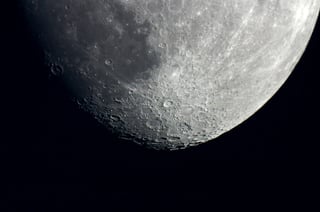Regarding the possiblity of a moon-shattering kaboom raised by the square-cube law, consider Tycho crater:
Its a biggun... >80km across, and clearly visible from Earth (possibly with the aid of binoculars, if your eyes aren't great, but even so) but there are plenty of larger craters on the Moon, which remains resolutely intact.
I wasn't able to find much good research on the nature of the Tycho impactor, but having a fiddle with the charmingly old-school-looking lunar crater simulator, I was able to come up with something about 12km across and travelling at about 15km/s for a total kinetic energy of ~1.5 x 1023J, or ~36 teratonnes TNT equivalent. Even if it were wrong by two whole orders of magnitude, that's still a much bigger boom than the antimatter cooking off, and it'll do a much better job of shovelling regolith and rock around.
A tonne of antimatter will make a fearsome blast, but still small beans compared to a reasonably sized space rock. The moon isn't going anywhere.

